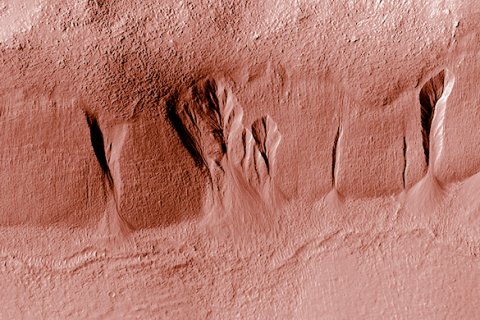Water, rivers and deltas on planet Mars

Deltas, fans and channels on Mars clearly indicate fluid surface water in the past. These features contain valuable information about the duration and magnitude of surface water, with obvious implications for the possibility of primitive life on Mars. This also sheds new insight on earth surface processes longer than half a billion years ago when land vegetation had not yet developed. To find out how much fluid water flowed on Mars, how long and how long ago, we study source and sink systems of water on Mars through satellite images, numerical models and experiments.
At the largest scale, collapses of chaotic terrains may have caused massive floods 3.5-4 billion years ago that carved entire valleys in months. Groundwater outflow have formed fluvial valleys and box-canyons over longer times. However, meteorite impacts and volcanic outburst caused fluid water that formed hundreds of river deltas within months throughout Mars’ history. Finally, seasonal melting in relation to variations in Mars’ orbit around the Sun caused debris flows in many impact craters that involved minor amounts of fluid water as recent as 500,000 years ago and as frequent as in the Alps and Arctic on Earth.

